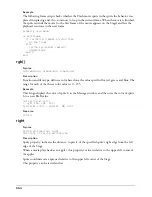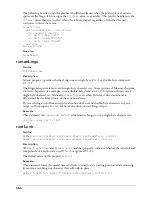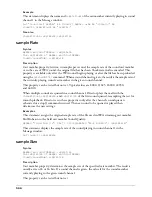
558
The following handler sends the playhead to different frames when the pointer is over certain
sprites on the Stage. It first assigns the
rollOver
value to a variable. This lets the handler use the
rollOver
value that was in effect when the rollover started, regardless of whether the user
continues to move the mouse.
on exitFrame
set currentSprite = the rollover
case currentSprite of
1: go to frame "Left"
2: go to frame "Middle"
3: go to frame "Right"
end case
end exitFrame
See also
mouseMember
romanLingo
Syntax
the romanLingo
Description
System property; specifies whether Lingo uses a single-byte (
TRUE
) or double-byte interpreter
(
FALSE
).
The Lingo interpreter is faster with single-byte character sets. Some versions of Macintosh system
software—Japanese, for example—use a double-byte character set. U.S. system software uses a
single-byte character set. Normally,
romanLingo
is set when Director is first started and is
determined by the local version of the system software.
If you are using a non-Roman script system but don’t use any double-byte characters in your
script, set this property to
TRUE
for faster execution of your Lingo scripts.
Example
This statement sets
romanLingo
to
TRUE
, which causes Lingo to use a single-byte character set:
set the romanLingo to TRUE
rootLock
Syntax
member(
whichCastmember
).model(
whichModel
).keyframePlayer.rootLock
member(
whichCastmember
).model(
whichModel
).bonesPlayer.rootLock
Description
3D
#keyframePlayer
and
#bonesPlayer
modifier property; indicates whether the translational
components of a motion are used (
FALSE
) or ignored (
TRUE
).
The default value of this property is
FALSE
.
Example
This statement forces the model named Alien3 to remain at its starting position while executing
its motions, resulting in a character that will walk in place:
member("newalien").model("Alien3").keyframePlayer.rootLock = 1
Summary of Contents for DIRECTOR MX-LINGO DICTIONARY
Page 1: ...Lingo Dictionary Macromedia Director MX...
Page 756: ...Index 756...
















































